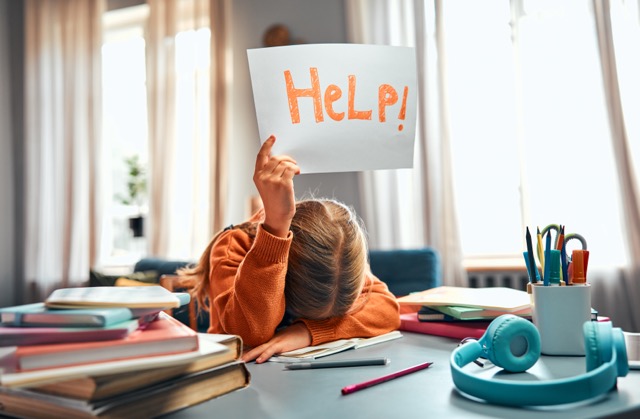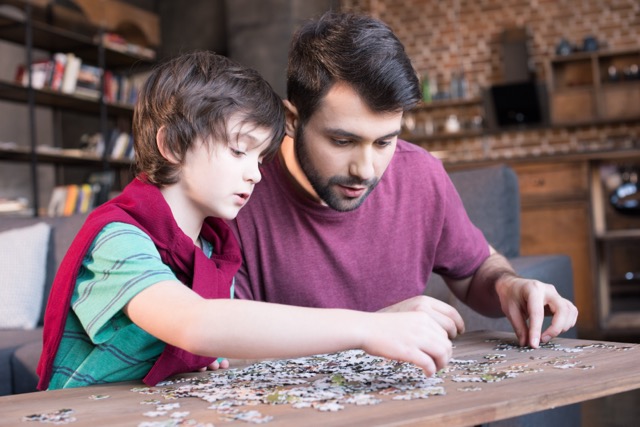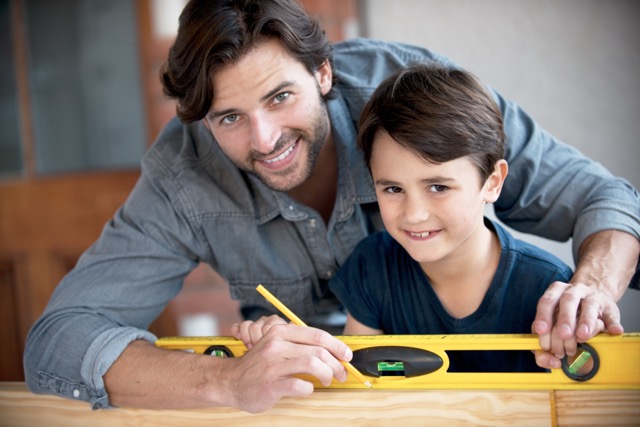
As parents, it’s natural to want to protect our children from life’s challenges. However, teaching them the skills they need to solve their problems is equally important. Encouraging children to become independent thinkers builds their confidence and equips them with valuable problem-solving skills. By guiding them through challenges rather than solving everything for them, you help them develop resilience and self-reliance. This practical guide will explore effective strategies to help your kids solve their problems. These techniques will empower your children to handle challenges confidently and grow into capable, resourceful adults.
Table of Contents
Common Problems Children Often Face
While experiencing the joys of growth and discovery, children also encounter various challenges that can affect their development and well-being. These issues can range from emotional and mental struggles to physical and social difficulties. Understanding children’s common problems can help parents, educators, and caregivers better support them through these challenging times. Here are eight common problems that children often face:
1. Bullying
Bullying remains one of the most prevalent issues children face today, especially in school settings. Bullying can be physical, verbal, or social, and with the rise of social media, it extends to the digital world as well. Victims of bullying often experience low self-esteem, anxiety, depression, and a sense of isolation. Bullying can also affect a child’s academic performance, as the constant fear of being bullied disrupts their focus and mental well-being.
2. Academic Pressure
Children today are under significant academic pressure, with parents, teachers, and society expecting high performance. Children are often pressured to achieve excellence in their studies from early childhood. This pressure can lead to anxiety, burnout, and a lack of self-confidence. The constant fear of failure or disappointing parents can overshadow their love for learning, making education seem like a source of stress rather than a joyful pursuit.
3. Mental Health Struggles
Anxiety, depression, and other mental health issues are increasingly common among children. Factors such as family problems, academic stress, bullying, and social pressures can contribute to mental health struggles. Young children, in particular, may not always be able to communicate their feelings effectively, leading to increased stress. These issues, if not addressed early on, can have long-lasting effects on a child’s emotional and psychological development.

4. Cyberbullying
With the rise of social media and digital communication, cyberbullying has become a significant concern for children. Cyberbullying involves harmful behaviors like spreading rumors, harassment, or exclusion through online platforms. Unlike traditional bullying, cyberbullying can happen 24/7 and often goes unnoticed by parents and teachers. The internet’s anonymity can encourage bullies to be more aggressive and harmful. Children who are victims of cyberbullying may experience heightened emotional distress, and in some cases, this can lead to suicidal thoughts.
5. Peer Pressure
Peer pressure can affect children of all ages, but it is particularly prevalent during adolescence. Children often feel pressured by their friends to conform to specific behaviors, whether it’s about fitting in socially, engaging in risky behaviors, or making decisions that they may not be comfortable with. Peer pressure can lead to poor decision-making, particularly when children need to fit in or avoid being ostracized by their social groups. This can cause problems in self-esteem and personal identity problems as children struggle to balance their values with those of their peers.
6. Lack of Physical Activity
In today’s digital age, many children spend more time in front of screens than engaging in physical activity. This sedentary lifestyle can lead to a number of problems, including obesity, poor cardiovascular health, and reduced social interaction. The lack of outdoor play and physical exercise affects a child’s physical health and emotional and social development. Physical activity is crucial for children to build strong muscles, develop motor skills, and maintain a healthy weight.
7. Family Issues
Family problems, such as divorce, financial stress, or family conflict, can profoundly affect children. Divorce, for example, can lead to feelings of confusion, sadness, and insecurity as children struggle to understand the changes in their family dynamics. Financial stress can cause children to feel anxious, especially if they sense tension in the household due to money concerns. In some cases, family issues can also lead to neglect, which significantly impacts a child’s development and emotional well-being. Children may feel uncertain about their place in the family and experience difficulties adjusting to new living arrangements or financial situations.
8. Bullying by Siblings
While bullying often refers to peers or classmates, siblings can also be a source of bullying. Sibling rivalry and conflicts are natural to some extent, but when one sibling repeatedly hurts or belittles another, it can have a lasting emotional impact. Sibling bullying can be physical, verbal, or emotional, and it can make a child feel unsupported or unloved within their own home. This type of bullying may lead to feelings of isolation or self-doubt, and can even cause long-term emotional scars if not addressed early on.

How To Help Your Kids Solve Their Own Problems
Instead of stepping in immediately to fix their problems, guiding children through finding their solutions is important. Here are seven effective strategies to help your kids become independent problem solvers:
1. Encourage Independent Thinking
The first step in helping children solve their problems is encouraging them to think critically and independently. When they come to you with a problem, ask open-ended questions that help them reflect on possible outcomes instead of immediately offering a solution. Questions like “What do you think you should do?” or “What options do you have?” prompt your child to think through the situation themselves.
You encourage your child to trust their judgment and decision-making abilities by fostering this independence. This skill helps them build confidence in their capabilities, which is essential as they grow.
2. Teach Problem-Solving Steps
Teach your children a simple framework for solving problems. Break down the process into manageable steps that they can follow, even at a young age. These steps can include:
- Identifying the problem: Help your child understand the nature of their situation.
- Brainstorming solutions: Encourage them to think of several ways to solve the problem, even if some ideas initially seem silly.
- Evaluating solutions: Discuss the pros and cons of each solution, considering possible consequences.
- Taking action: Once they choose a solution, help them take the necessary steps to implement it.
- Reflecting on the outcome: Afterward, encourage your child to evaluate how well the solution worked and if they need to try something different next time.
This structured approach gives children a clear roadmap for handling future problems independently.
3. Model Problem-Solving Behavior
Children learn by example, and how you handle problems can teach them valuable lessons. When faced with a challenge, verbalize your thought process so they can understand how you approach solving issues. For example, if you’re trying to solve a work problem, explain how you identify the issue, consider possible solutions, and weigh the consequences of each option.
By modeling problem-solving behavior, you show your child that it’s okay to struggle with challenges and that solutions can often be found through patience and persistence. This can also encourage them to handle their challenges calmly and constructively.
4. Give Them the Tools They Need
Sometimes, children need more than just advice; they need the right tools to address the problem. These tools can include educational materials, strategies for managing emotions, or access to support networks. For instance, if your child struggles with time management, teach them to use a calendar or planner. Encourage them to role-play solutions with you if they struggle with social issues.
The goal is to equip your child with the skills and knowledge they need to address their challenges. This prepares them to handle increasingly complex problems as they get older.
5. Encourage Resilience and Persistence
Part of solving problems is overcoming obstacles and keeping trying when things don’t go as planned. It’s important to teach your child the value of persistence. When they encounter failure, instead of offering immediate comfort or a quick fix, please encourage them to reflect on what went wrong and consider how to adjust their approach.
Praise your child for their effort and resilience, even if they didn’t solve the problem the first time. The more they practice resilience, the more confident they will overcome future challenges.
6. Allow Them to Experience Consequences
One of the most essential ways children learn is by experiencing the natural consequences of their decisions. While it may be tempting to shield your child from the consequences of their actions, allowing them to face these outcomes helps them learn from their mistakes. Whether missing a homework deadline or getting into a disagreement with a friend, the lesson learned from experiencing the fallout can be a powerful motivator for future problem-solving.
Of course, this doesn’t mean letting them make harmful decisions, but allowing them to learn from the less severe consequences gives them a sense of responsibility and ownership over their actions.

7. Provide Support, Not Solutions
While it’s essential to encourage independent thinking, children still need emotional support as they tackle problems. Let them know you’re there to help, but avoid giving them direct solutions. Instead, offer guidance when needed and encourage. For instance, if they’re struggling with a school project, you might help them break it into smaller, more manageable steps rather than completing the task for them.
Providing the right amount of support gives your child the confidence to handle problems independently while knowing they can turn to you for guidance when necessary.
8. Celebrate Successes and Learn from Failures
When your child successfully solves a problem, celebrate the accomplishment. Praise their effort, creativity, and perseverance. Positive reinforcement encourages children to continue applying problem-solving strategies to future challenges.
At the same time, teach your child that failure is a natural part of the process. Help them understand that mistakes aren’t failures but opportunities to learn and grow. Discuss what went wrong, what they could do differently, and how they can apply these lessons in the future. This encourages a growth mindset, where your child sees challenges as opportunities rather than obstacles.
Conclusion
Helping your kids develop problem-solving skills prepares them for future challenges and boosts their self-esteem and independence. By fostering a problem-solving mindset, you guide them toward becoming resilient, confident individuals. Remember, your support is crucial, but allowing your children to find their solutions will set them up for success. Parent Marriage offers professional advice and support if you need further guidance on parenting strategies. Visit Parent Marriage for more resources and personalized solutions to strengthen your parenting approach.






Leave A Comment